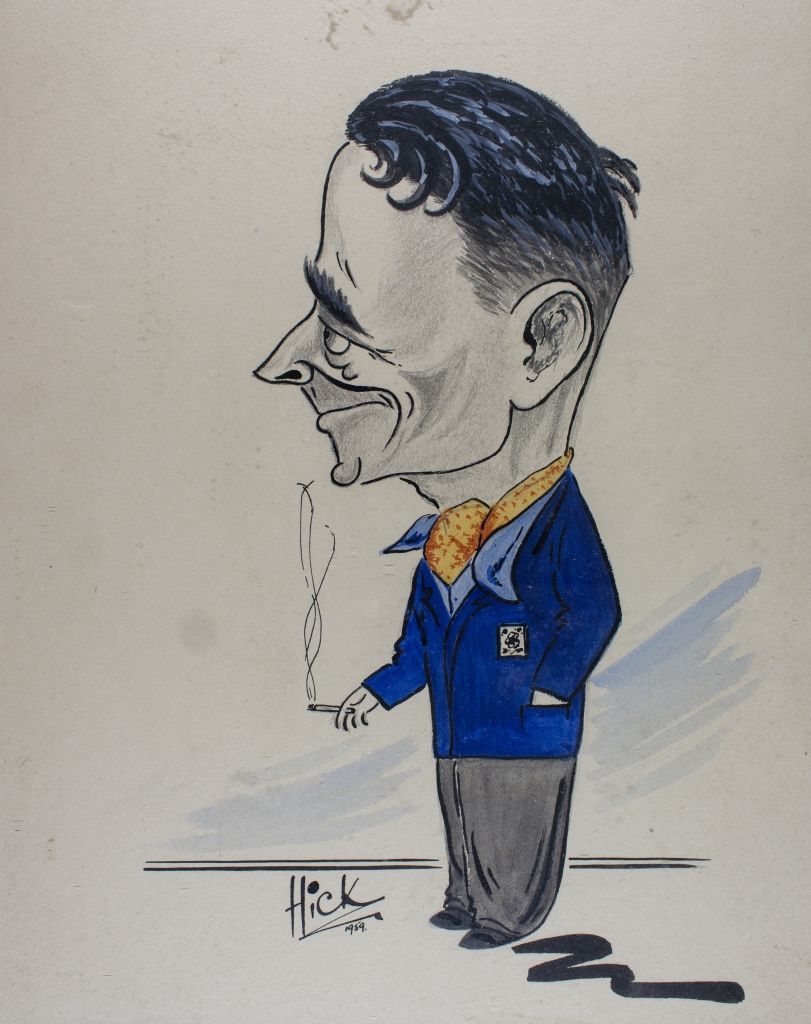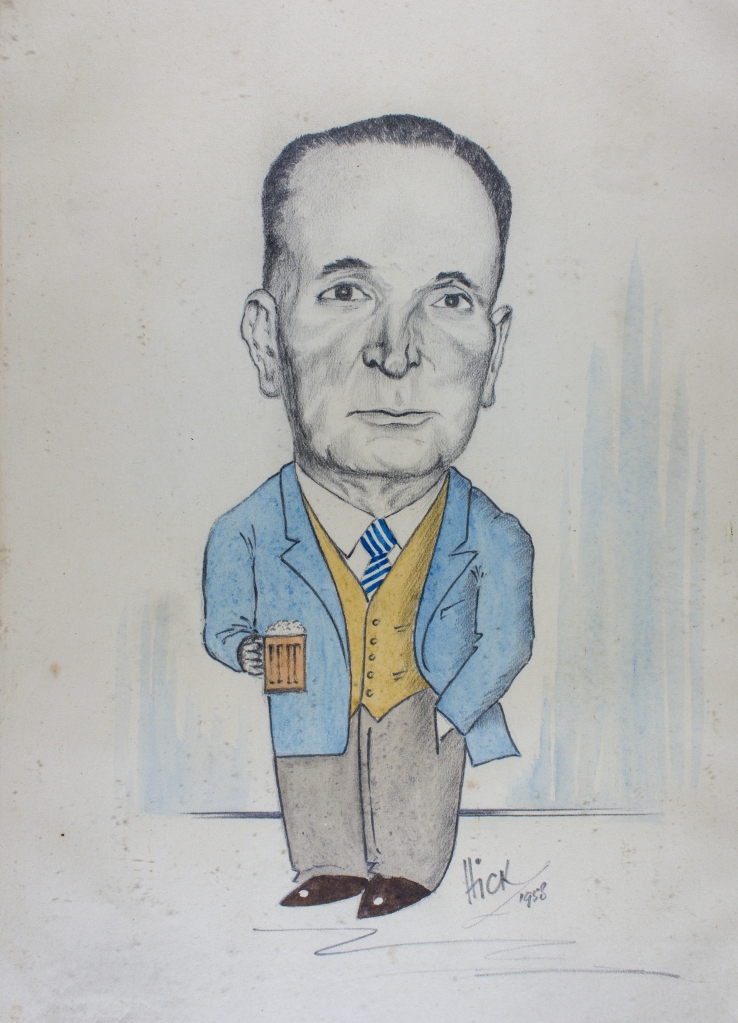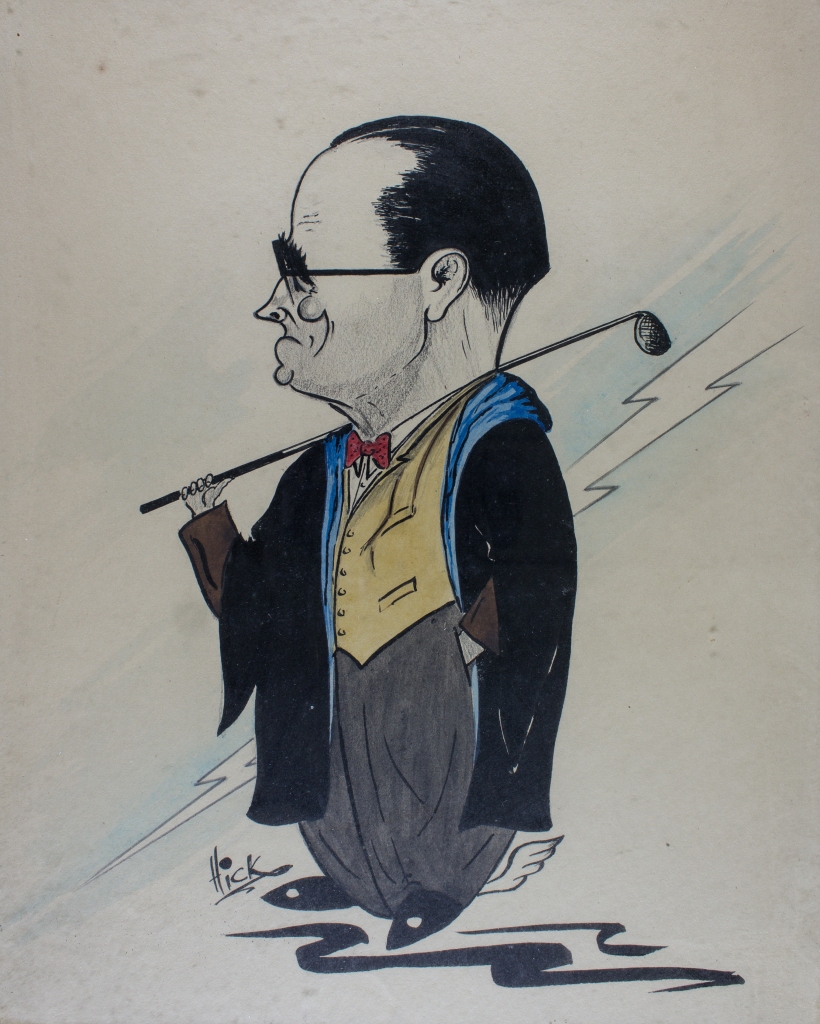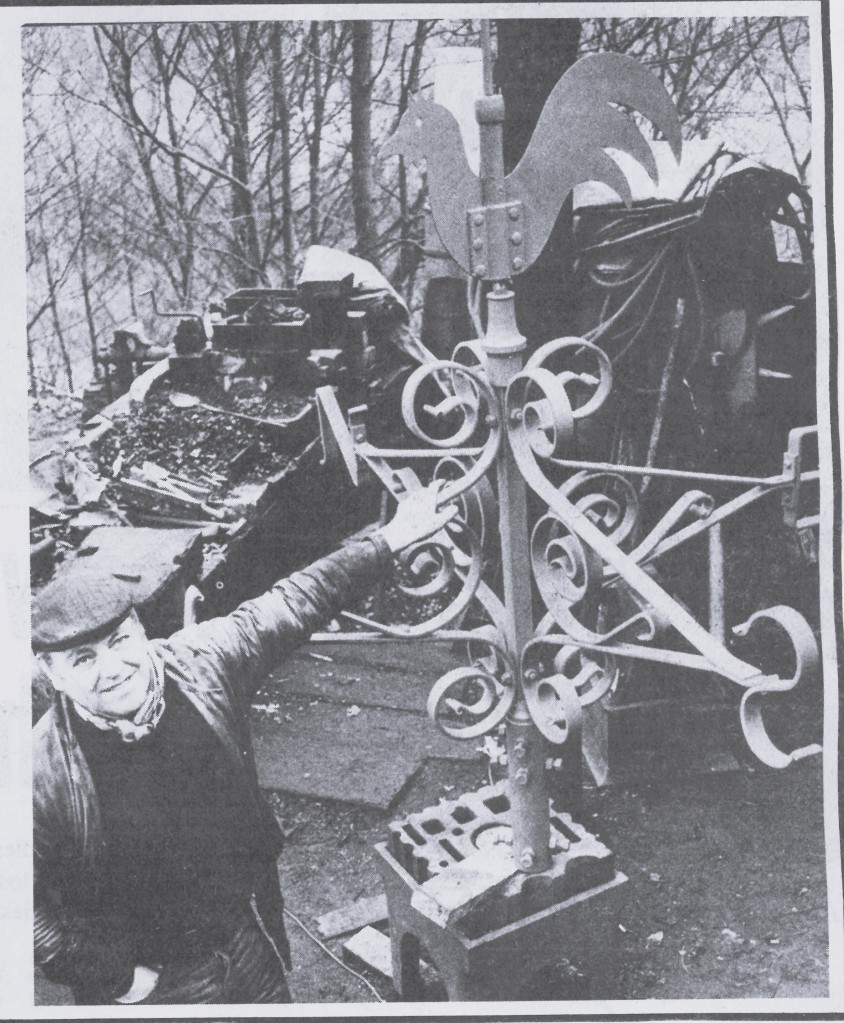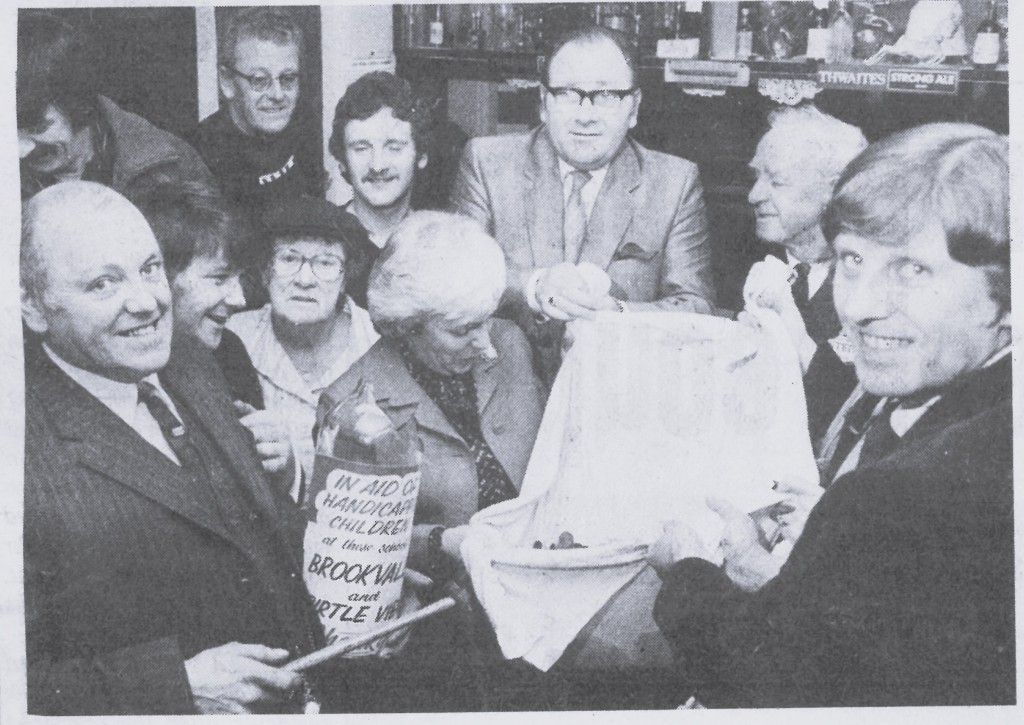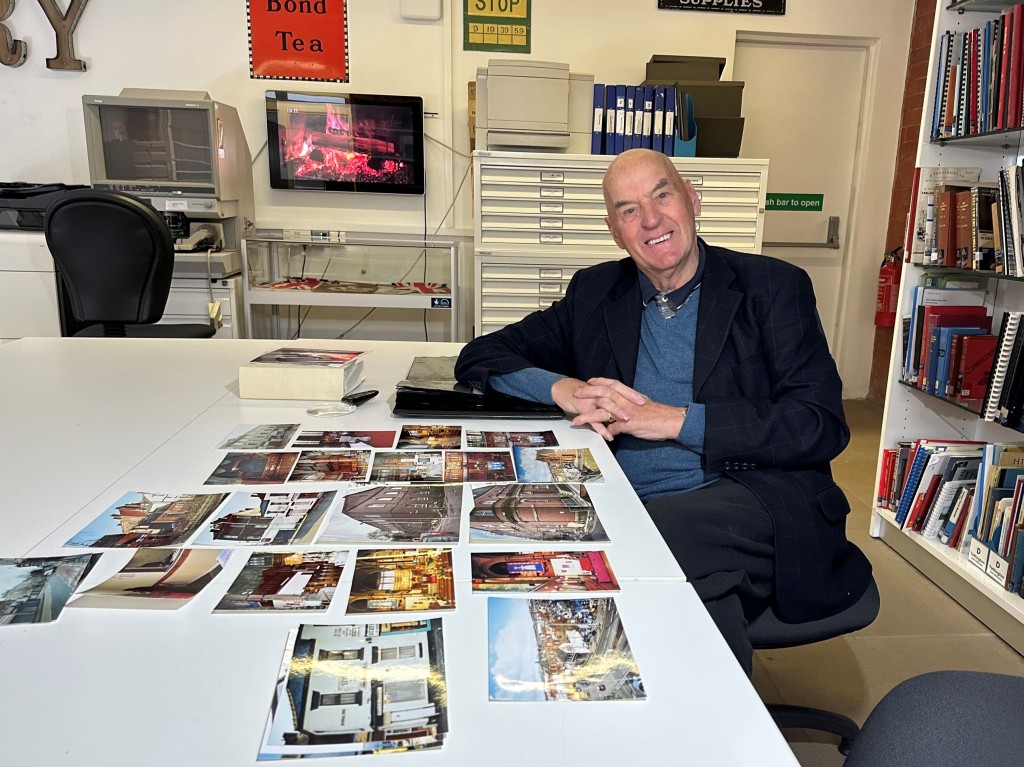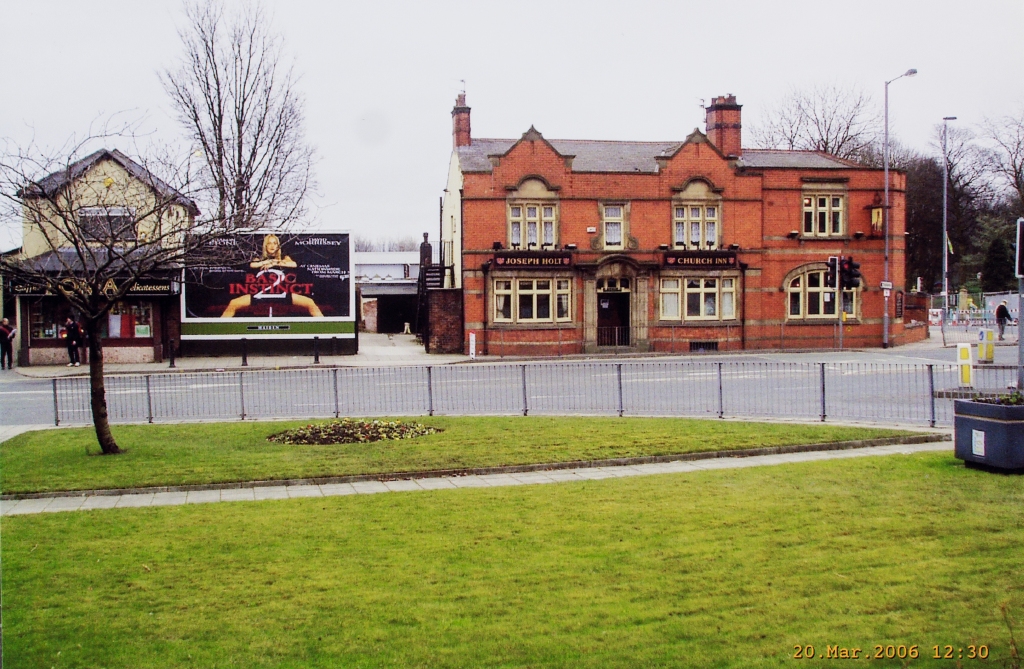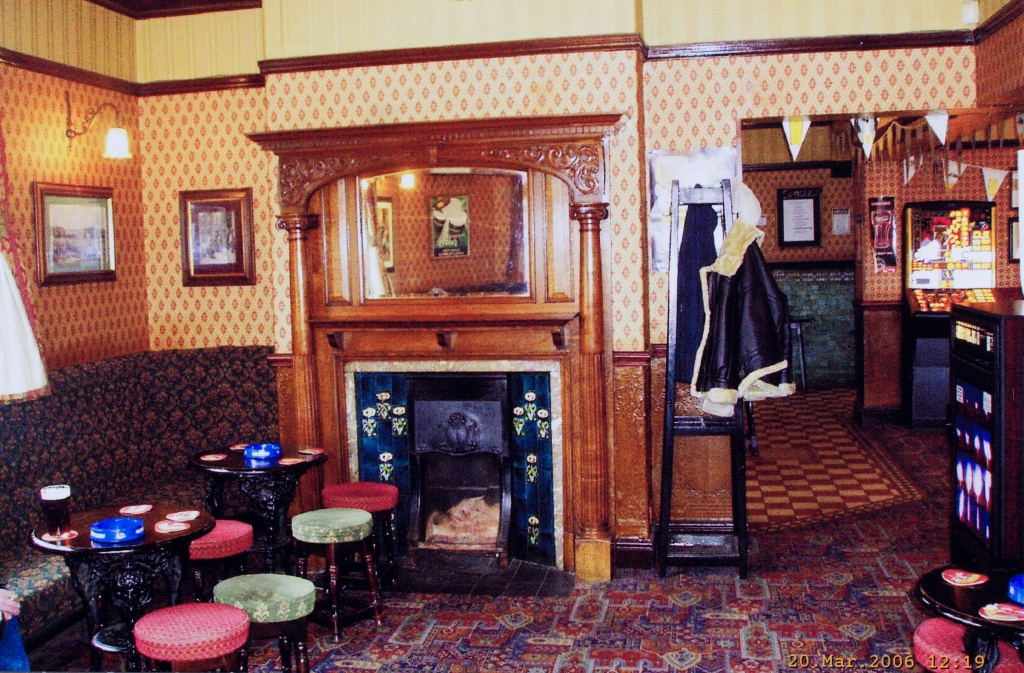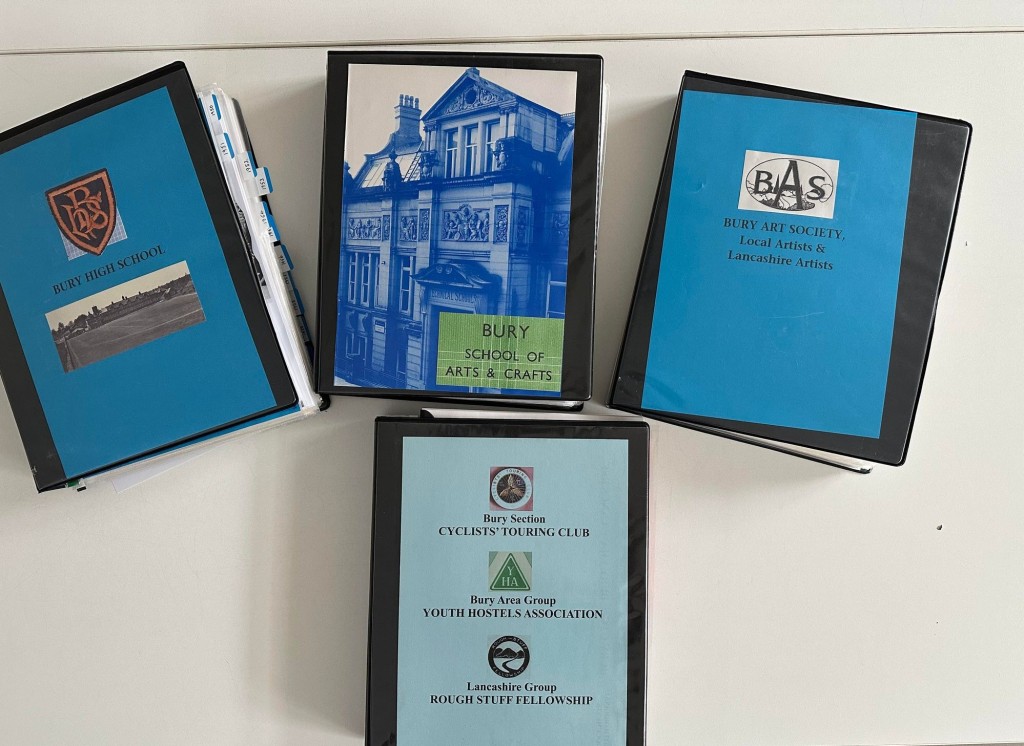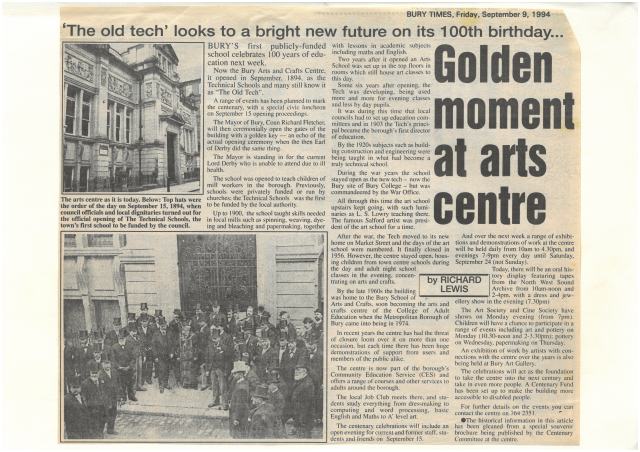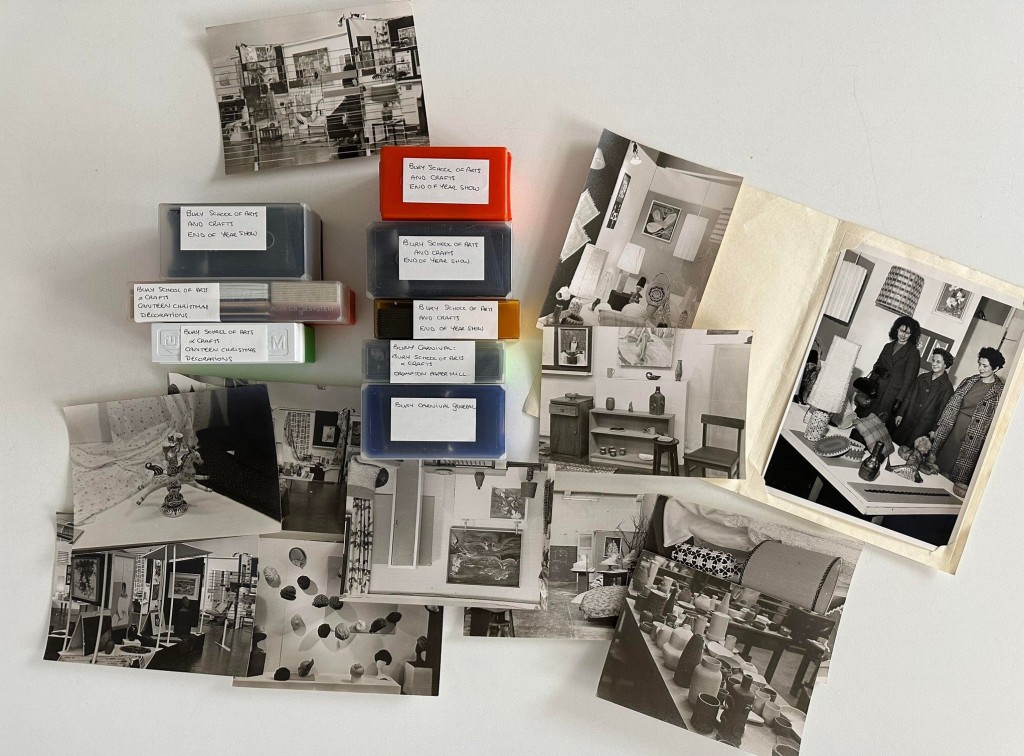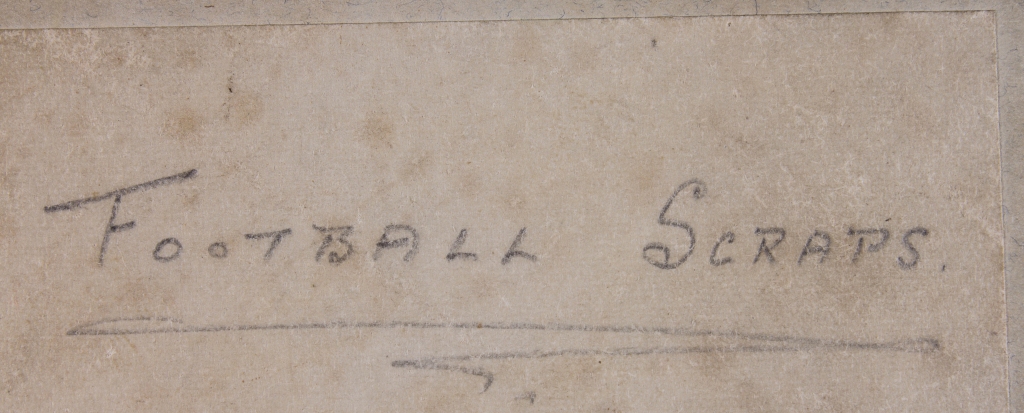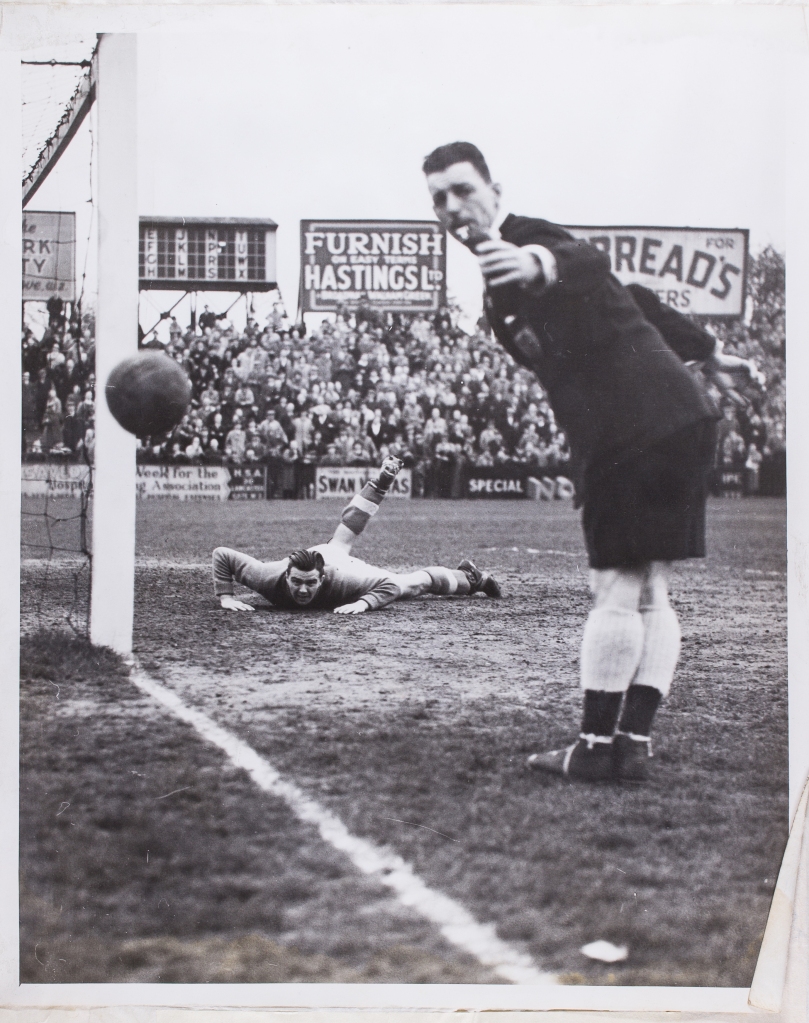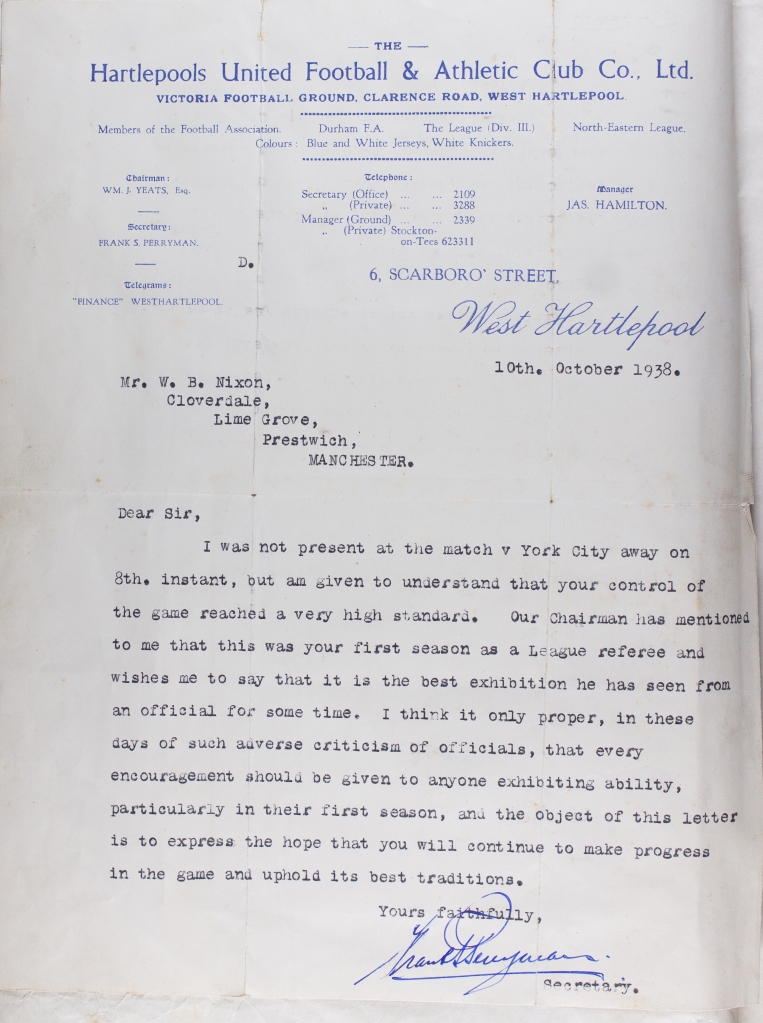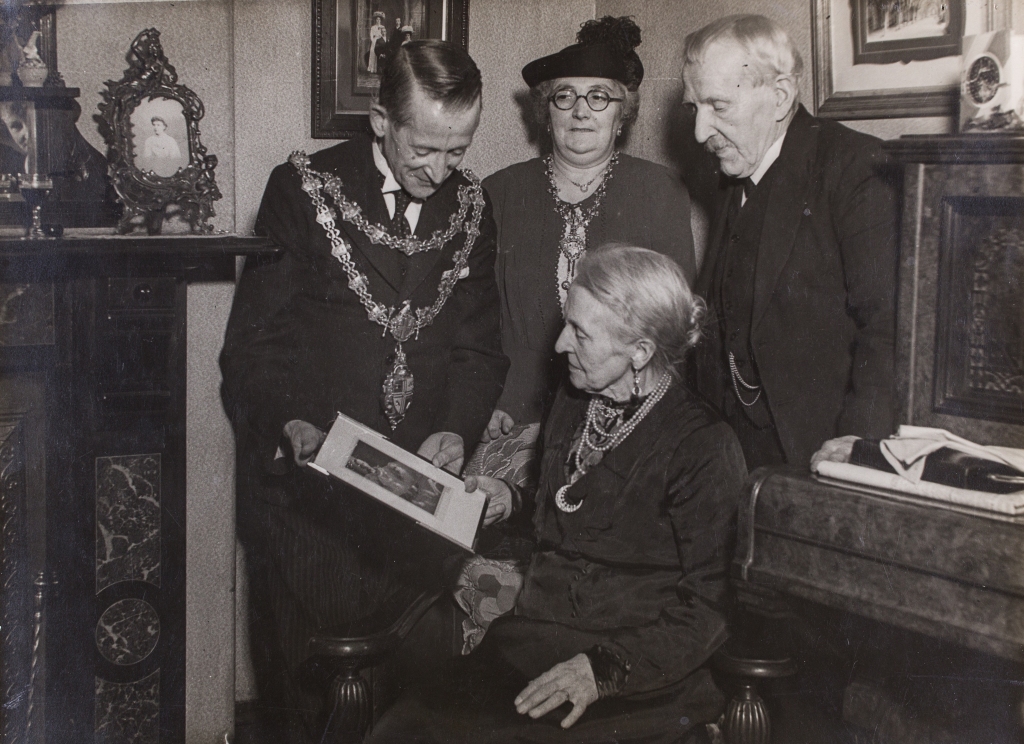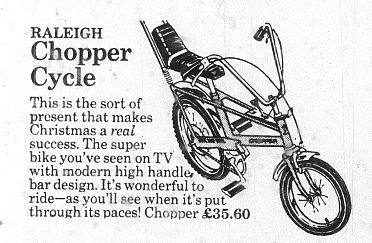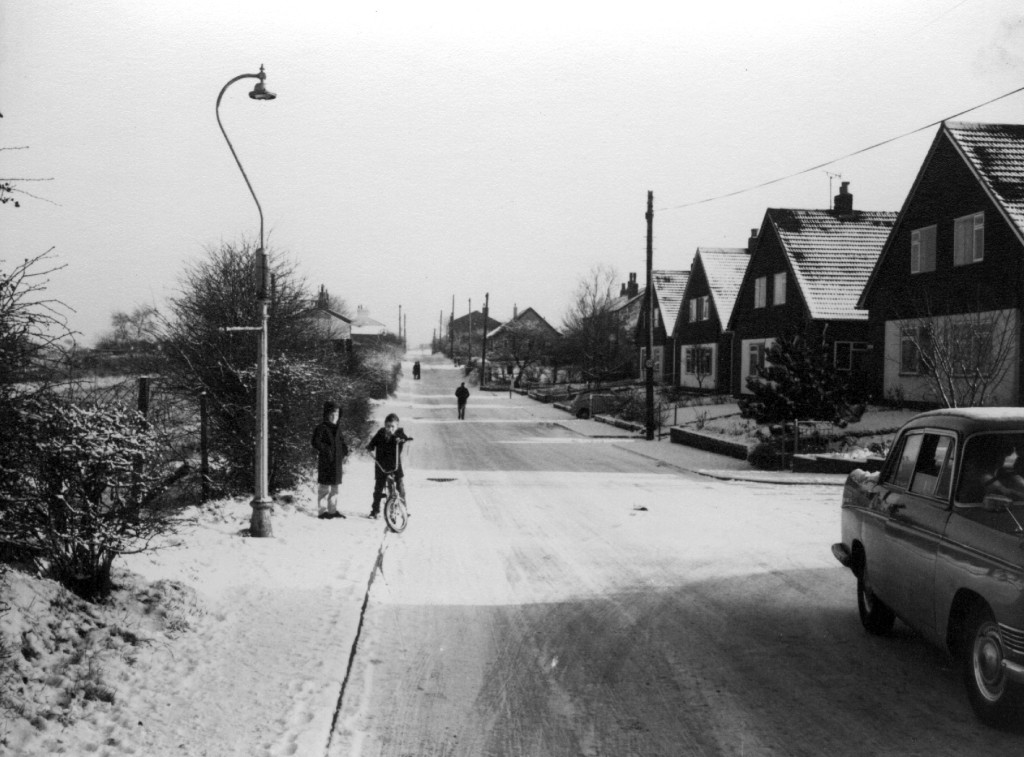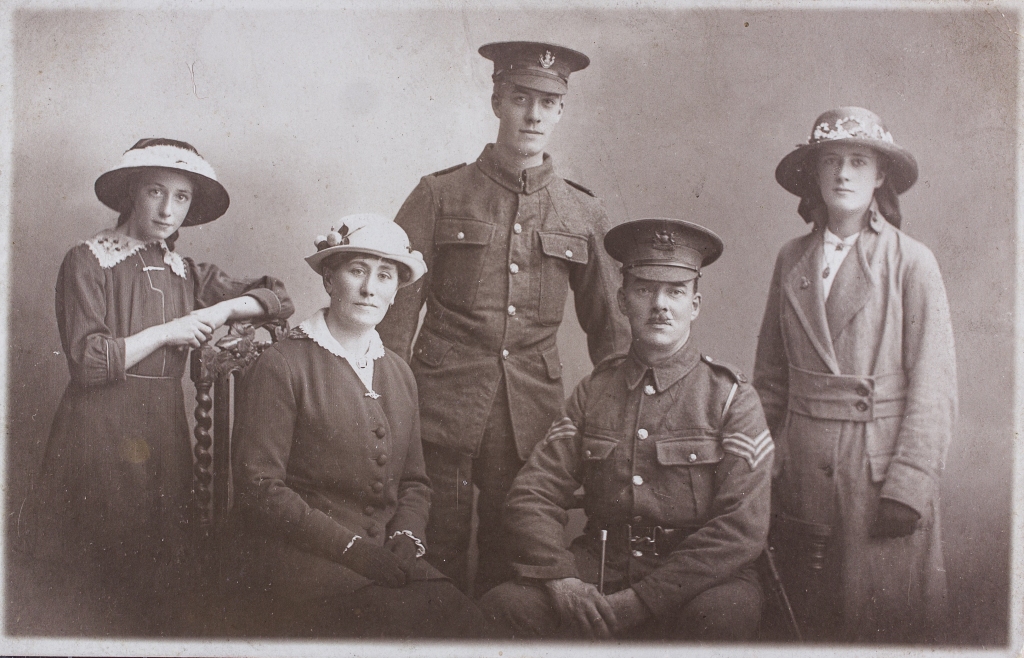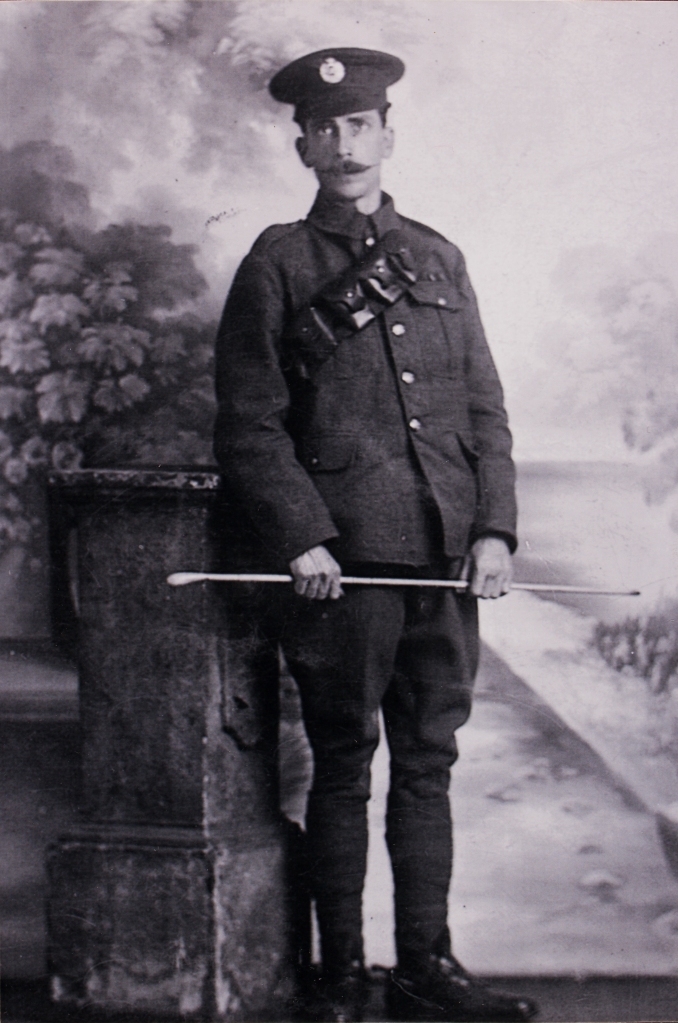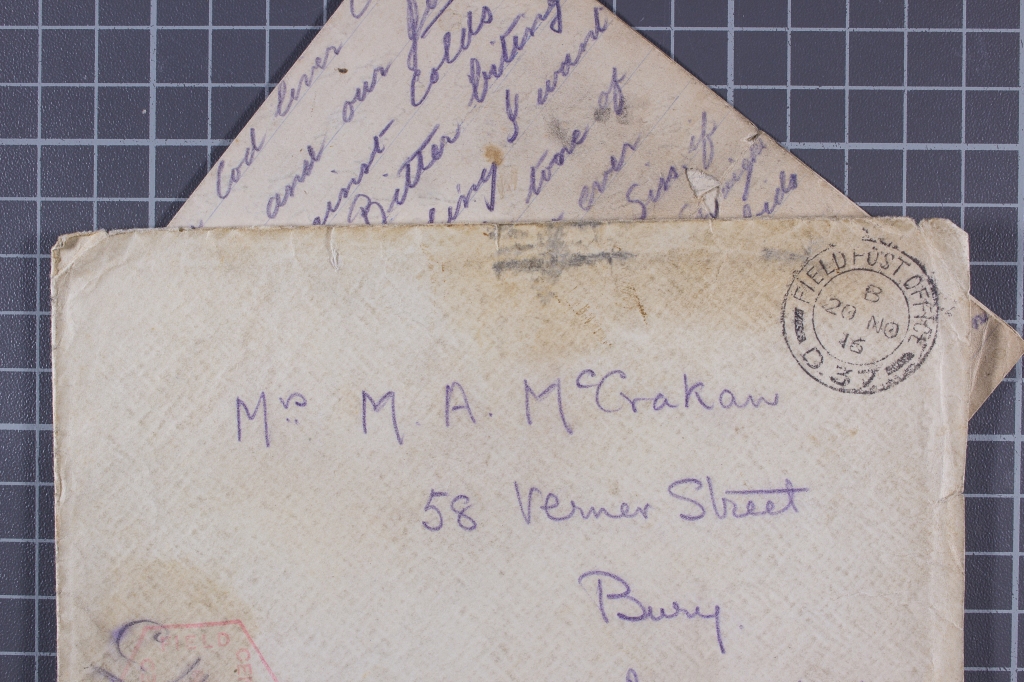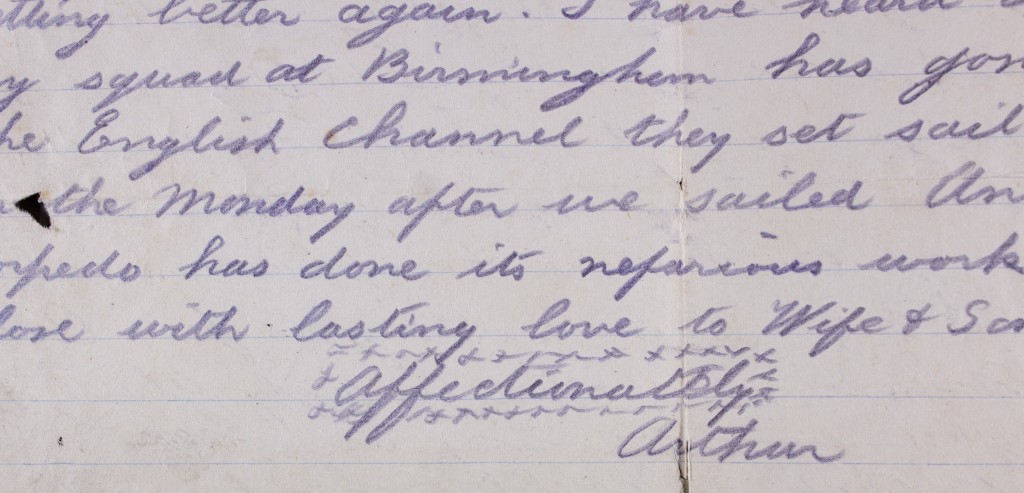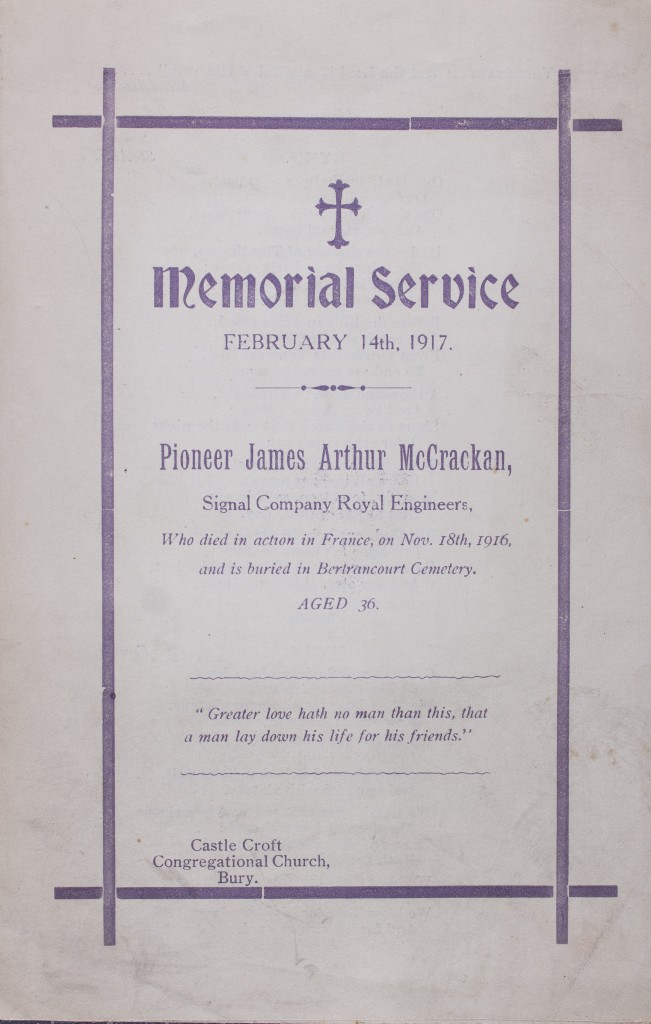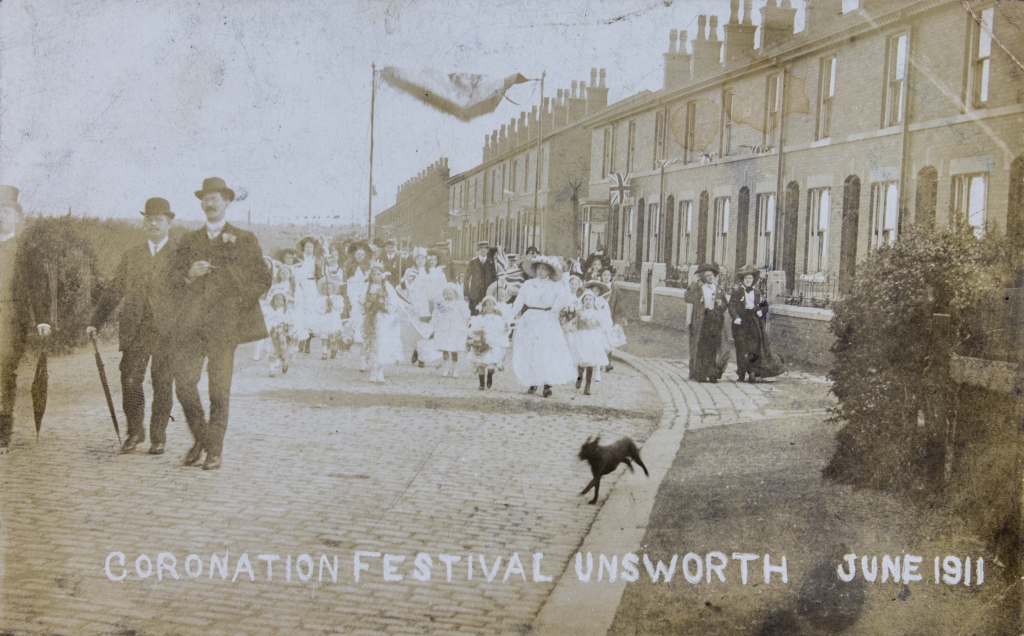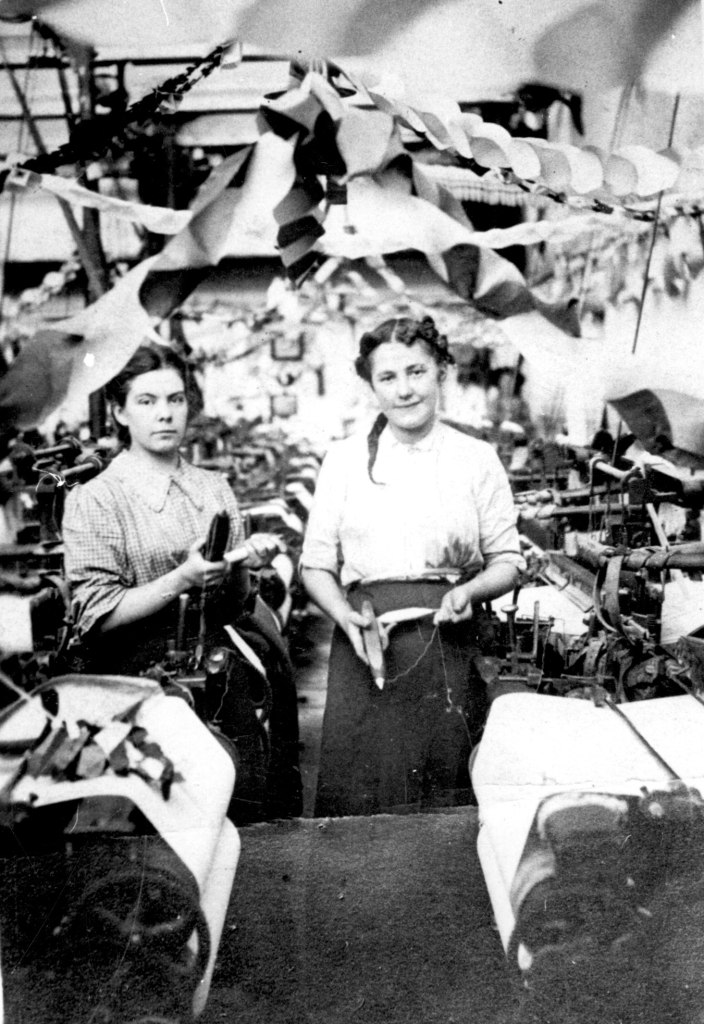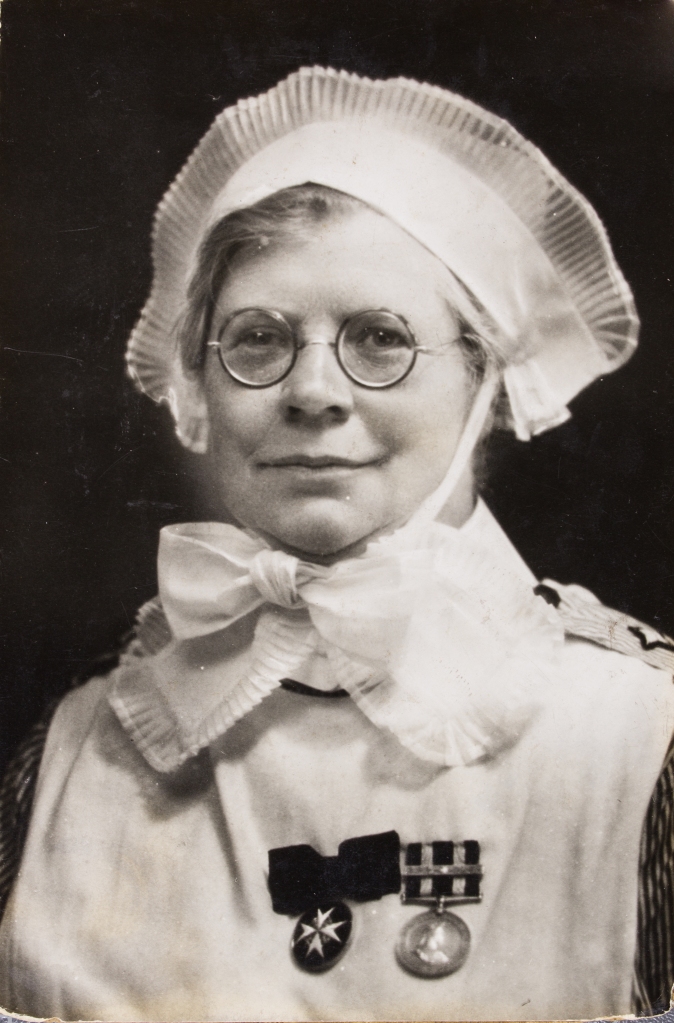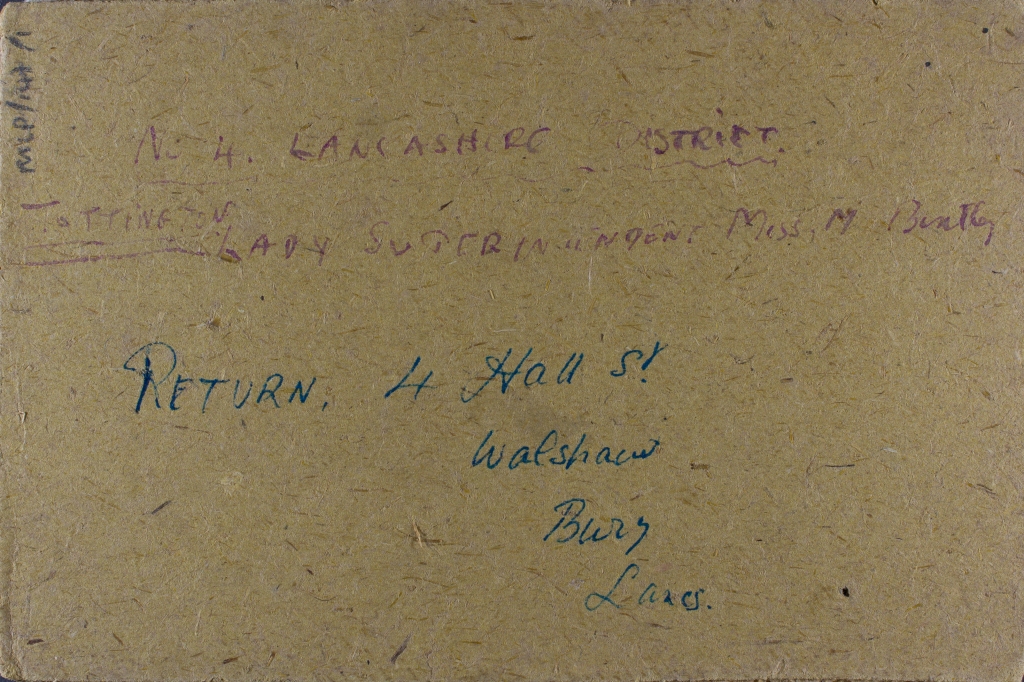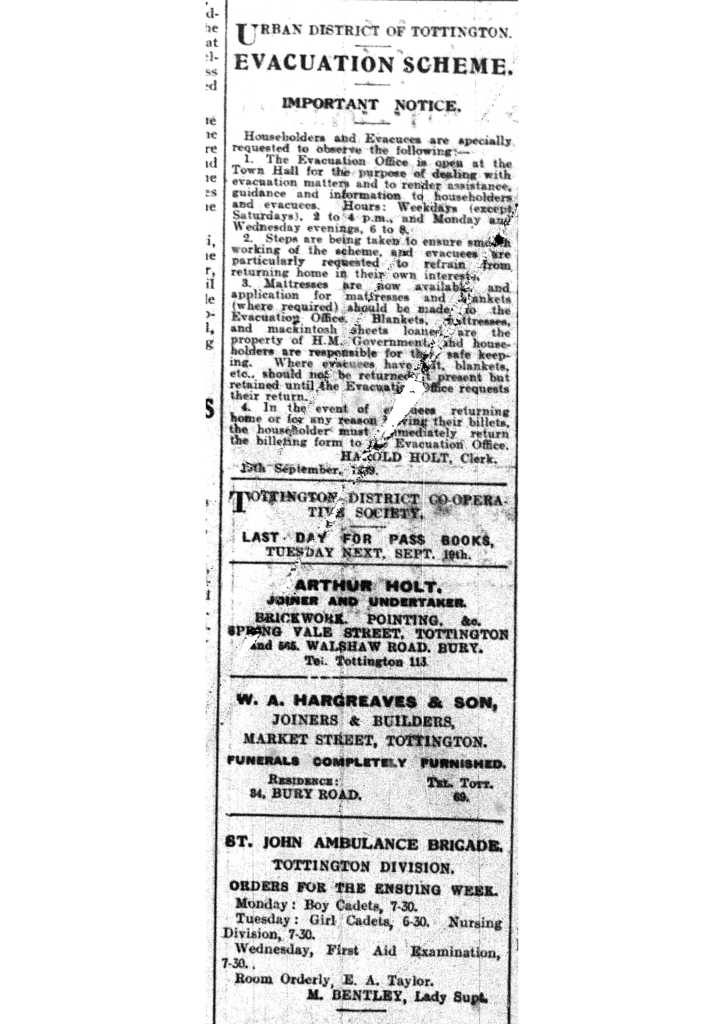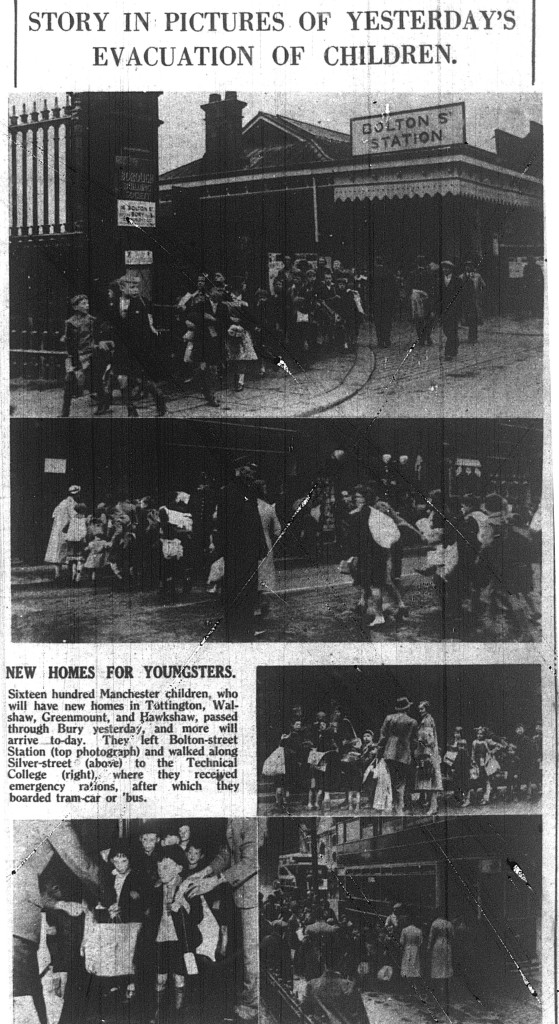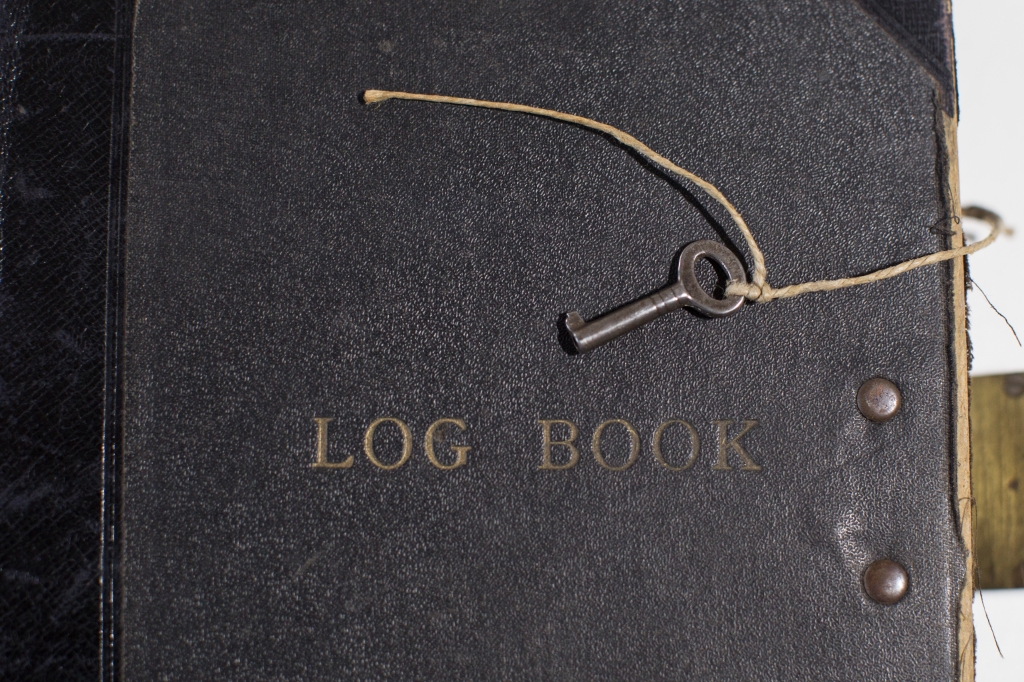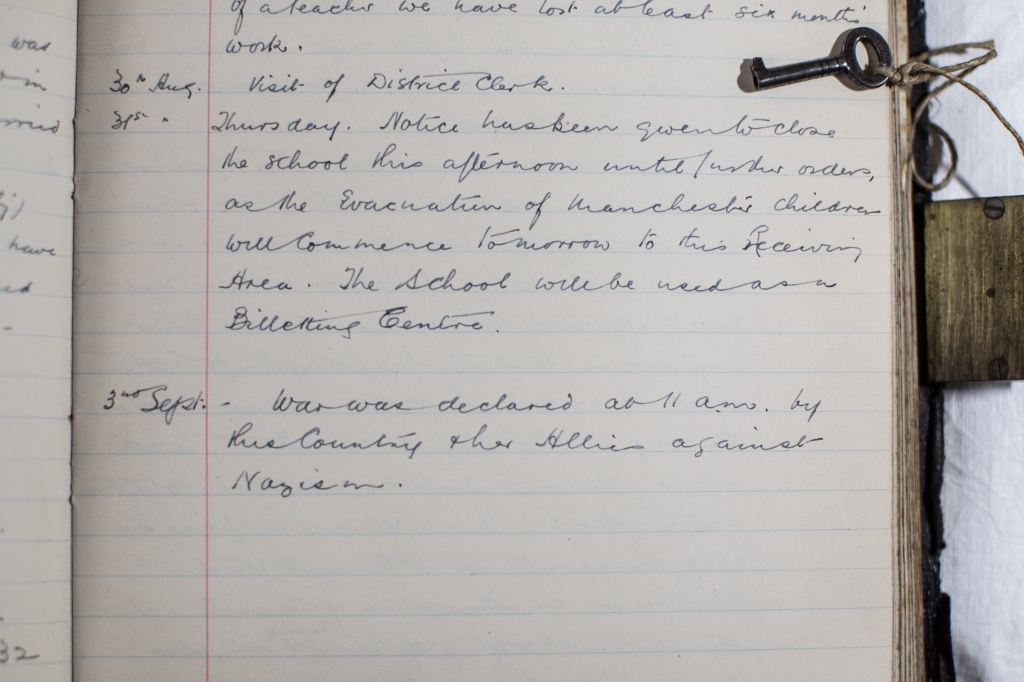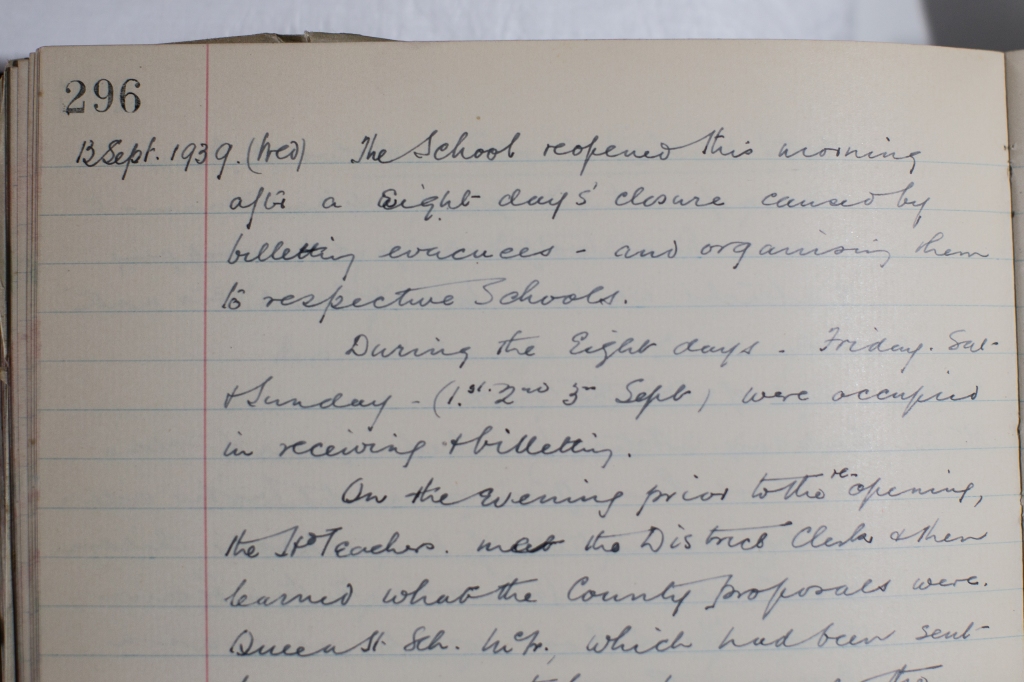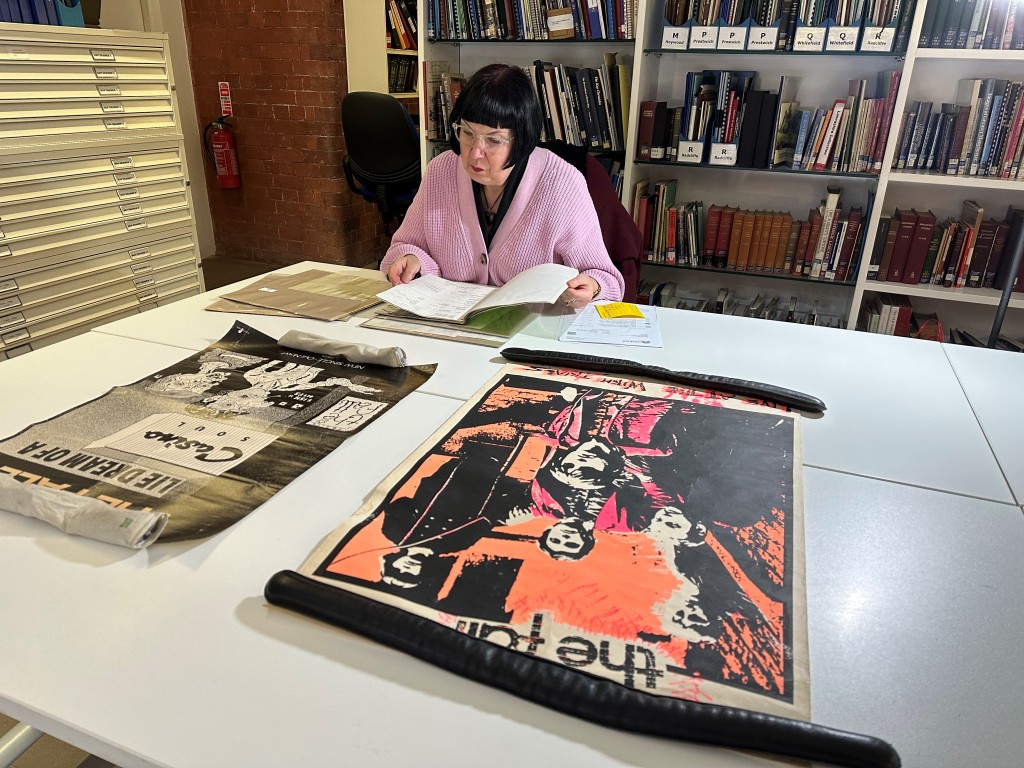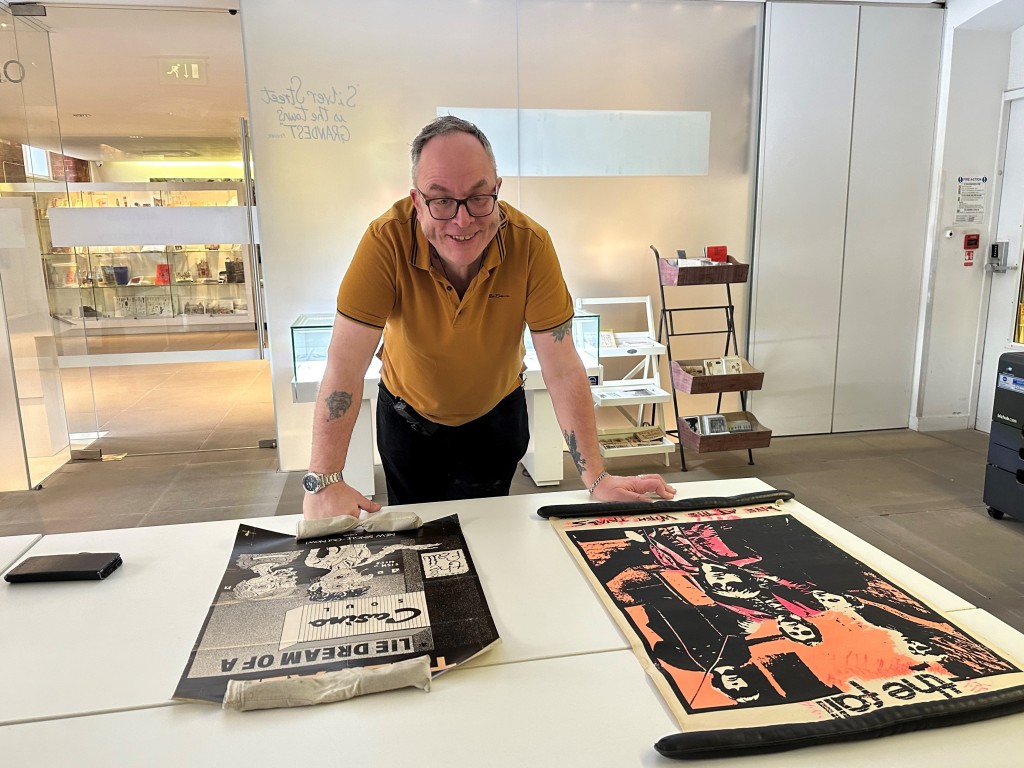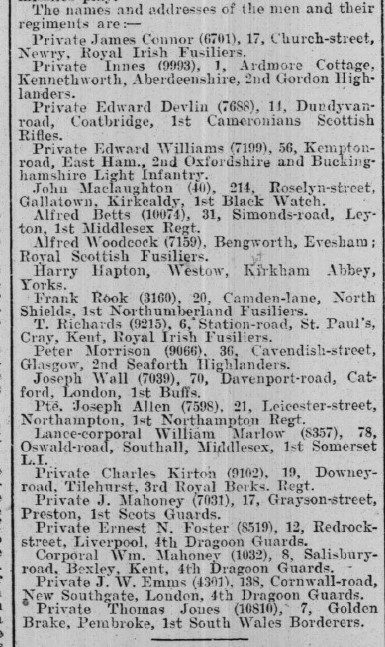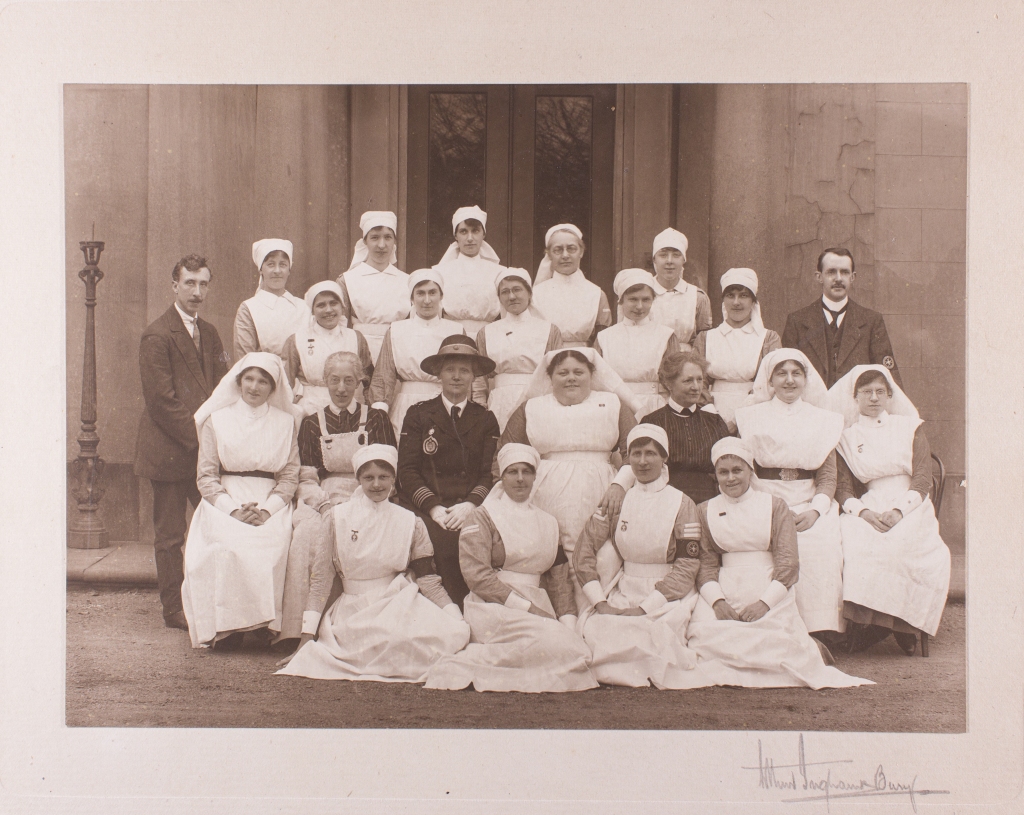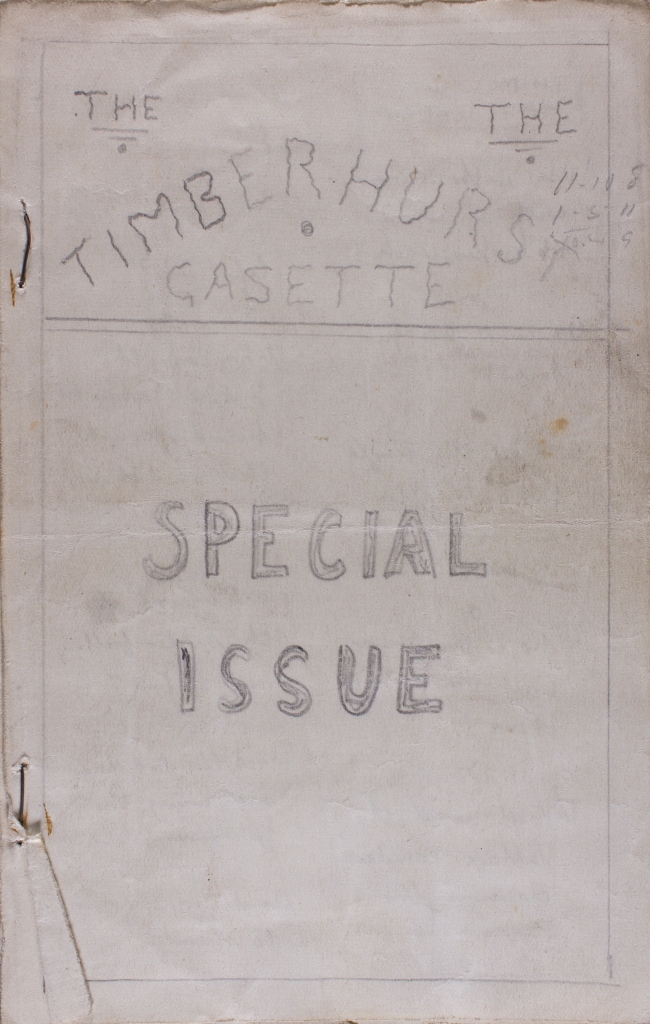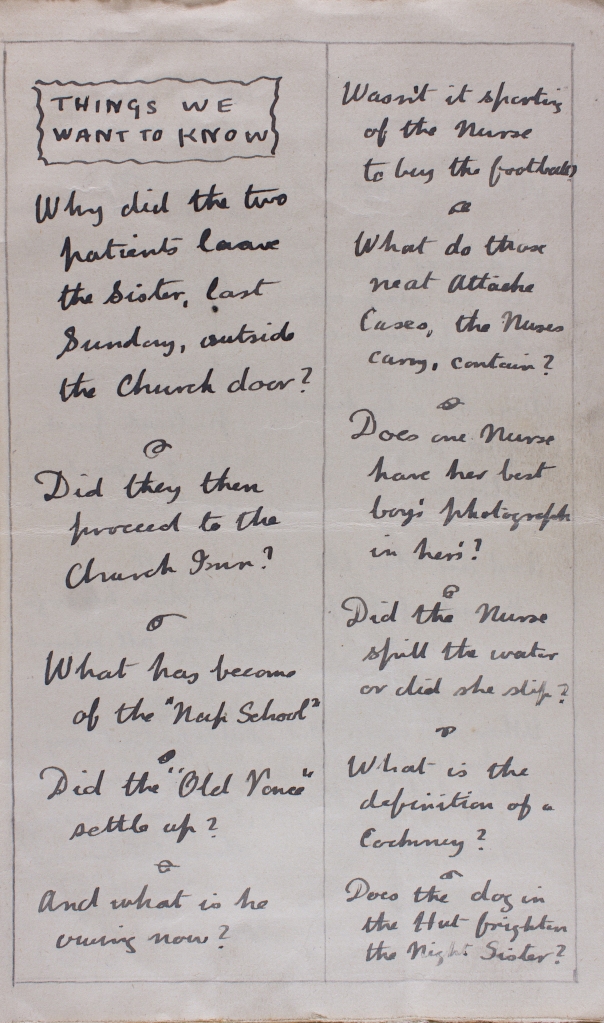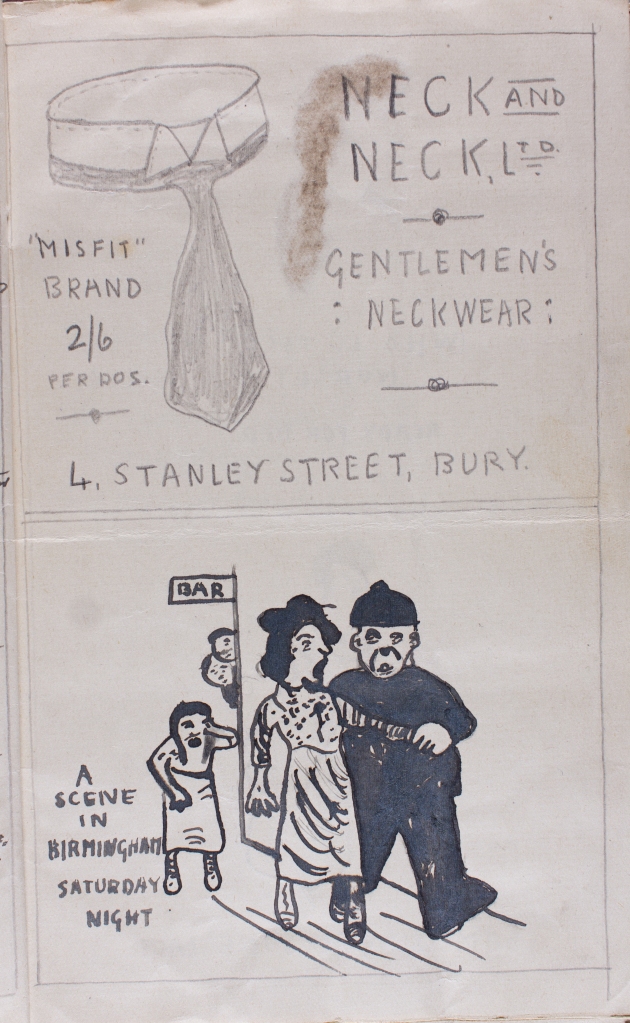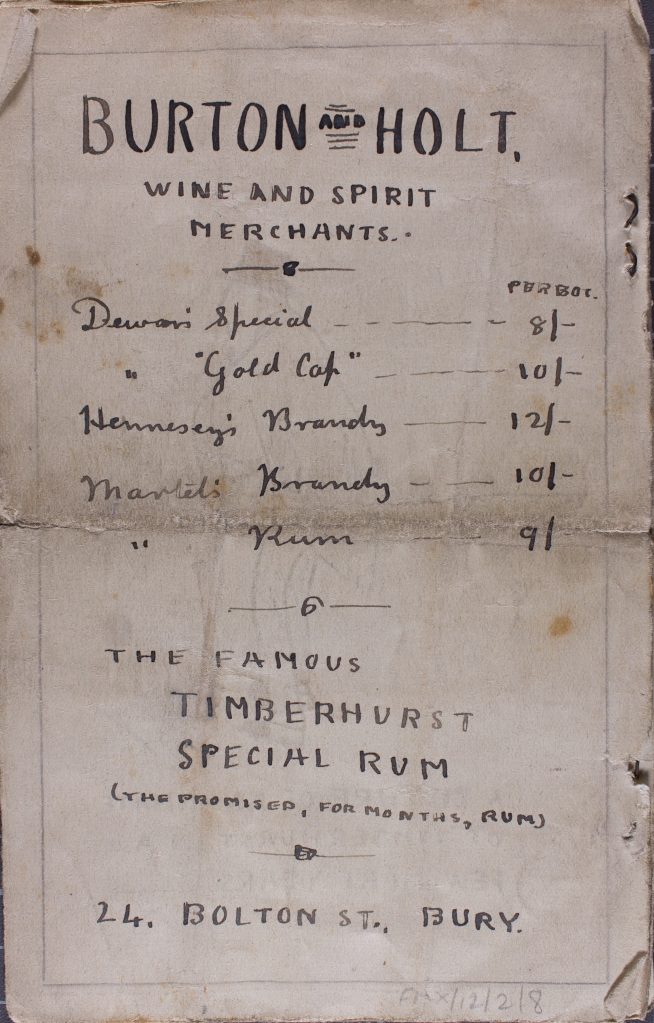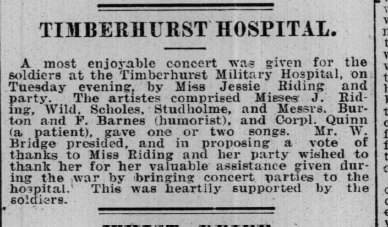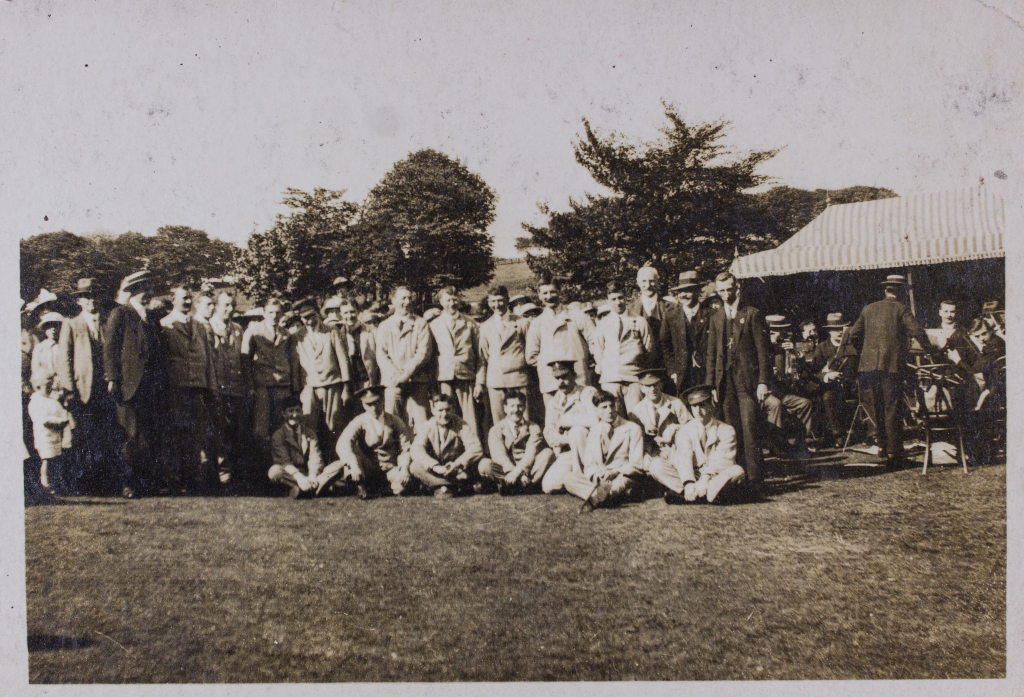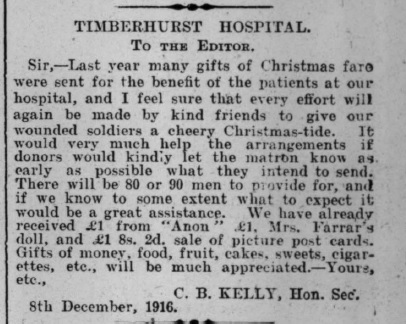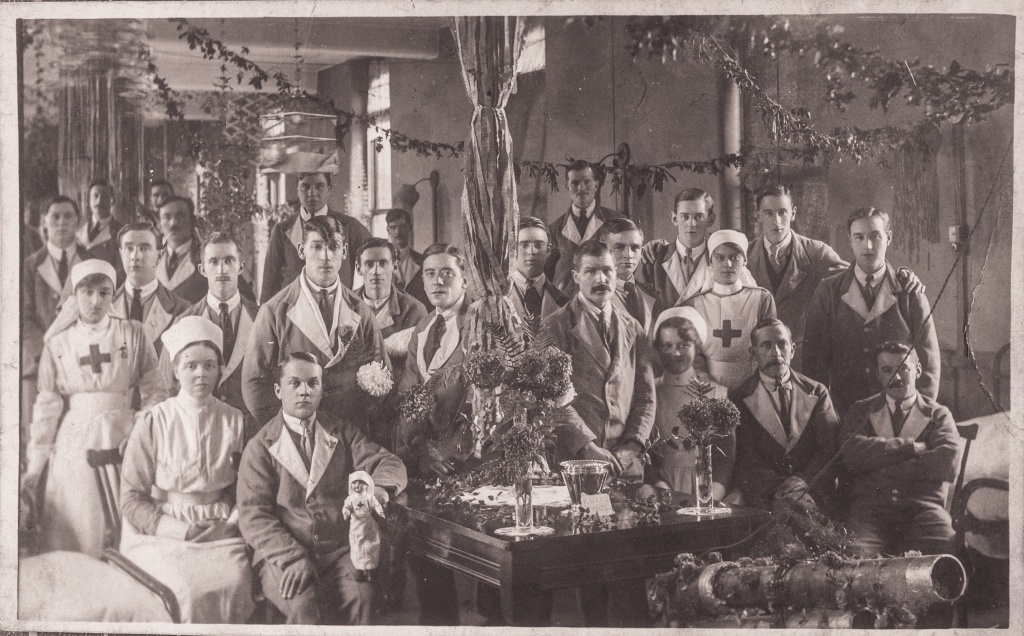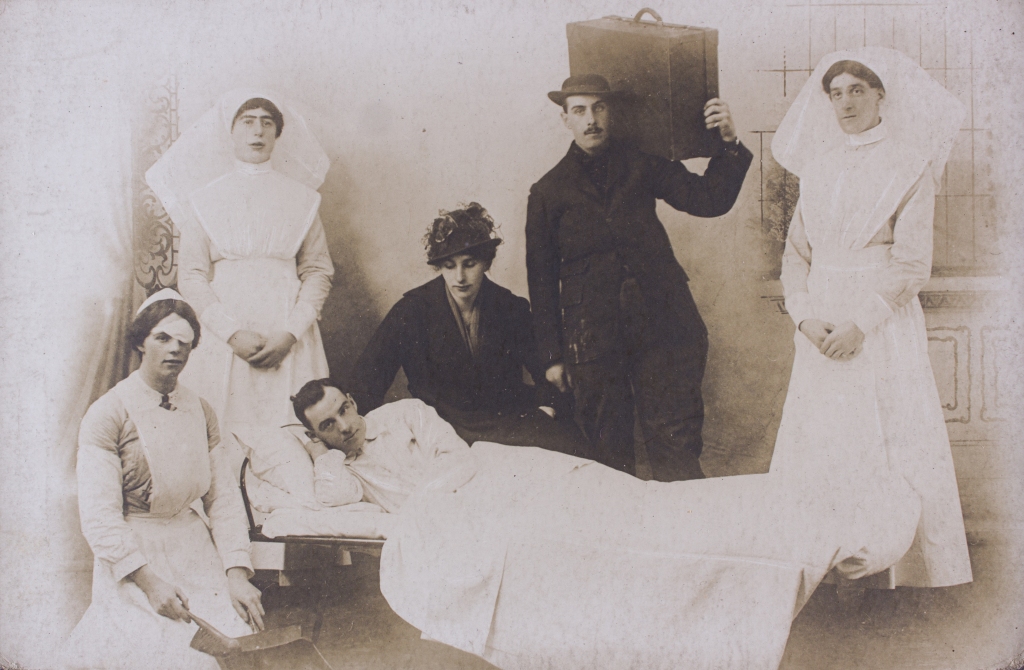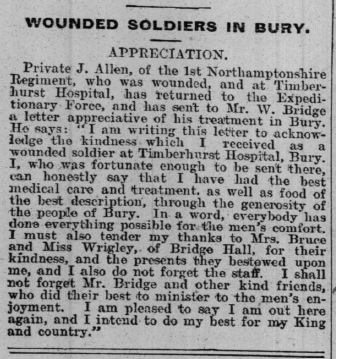We received a wonderful collection of material a few years’ ago from a private donor relating to her father, Jim Hargreaves. The collection includes theatre programmes for Ramsbottom Amateur Dramatic & Operatic Society alongside photographs of productions as well as four fantastic caricatures of Greenmount Golf Club members (more about these later). We are always eager to learn more of the history behind the items as this helps us provide context when cataloguing them, offering a deeper understanding of the person they belonged to and the period in which they were created. Below is a brief account of Jim Hargreaves’ life as told by his daughter, Val.
Jim Hargreaves
Jim Hargreaves led a remarkable life, contributing significantly to various aspects of his community in Ramsbottom. Born in Major St. Ramsbottom in 1916, he began his professional journey as a Cost Clerk at Walmsleys (Bury) Ltd before becoming the Chief Clerk with the Engineers’ and Surveyors’ Department of the old Ramsbottom Urban District Council, a position he held until the reorganisation in 1974. He transferred to the Chief Executive’s Department at Bury Town Hall, where he continued his dedicated service until his retirement in 1977.
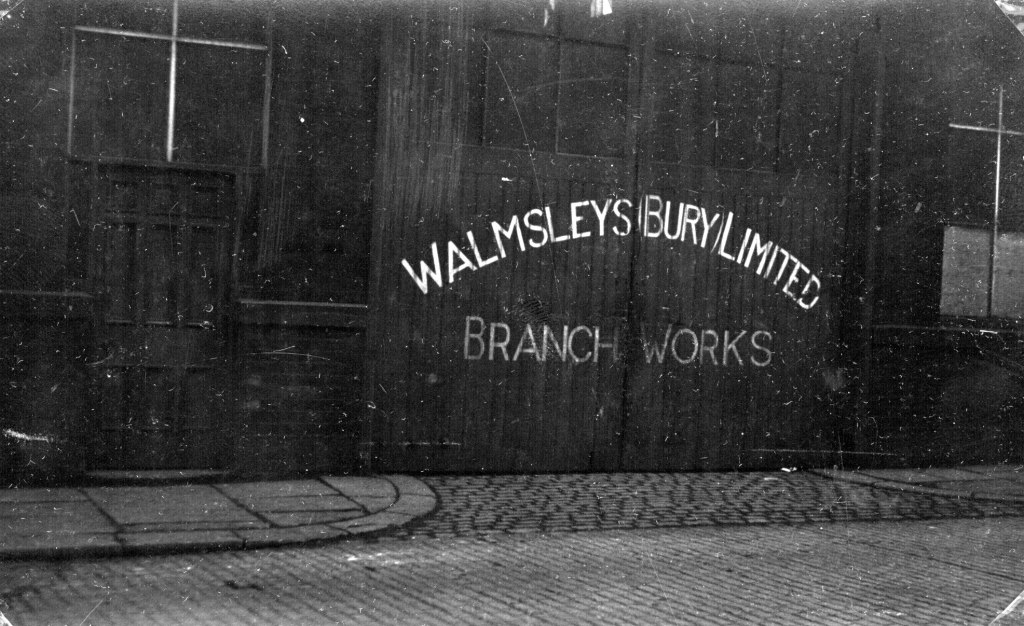
During the war, Jim served with the Army in the 4th Armoured Brigade, participating in the Normandy campaign.
Jim’s artistic talent was evident from an early age, with school reports from Haslingden Grammar School consistently placing him ‘top of the class’ in art and handicraft. Unfortunately, family circumstances led him to leave school after matriculating at 16, preventing him from pursuing formal art education. Despite this, Jim’s passion for art persisted throughout his life.
After marrying in 1942, he settled in Laurel St. in Tottington but maintained a deep affection for his hometown of Ramsbottom. Jim actively participated in various aspects of local life, contributing to organisations like the Ramsbottom and Tottington branch of the National Local Government Officers and serving as an honorary member of Greenmount and Ramsbottom cricket clubs. His amateur artistic pursuits became well-known in the area, with Jim creating individually commissioned posters for churches, businesses, and organisations, including the Bury Times. He also produced beautifully illustrated seating plans for dinners and events.
Jim played a significant role in the Ramsbottom Amateur Dramatic and Operatic Society (RADOS), illustrating programmes, painting scenery, and managing props. His involvement included memorable experiences, such as managing the stage entrance and exit of a live donkey during a production of the Desert Song!
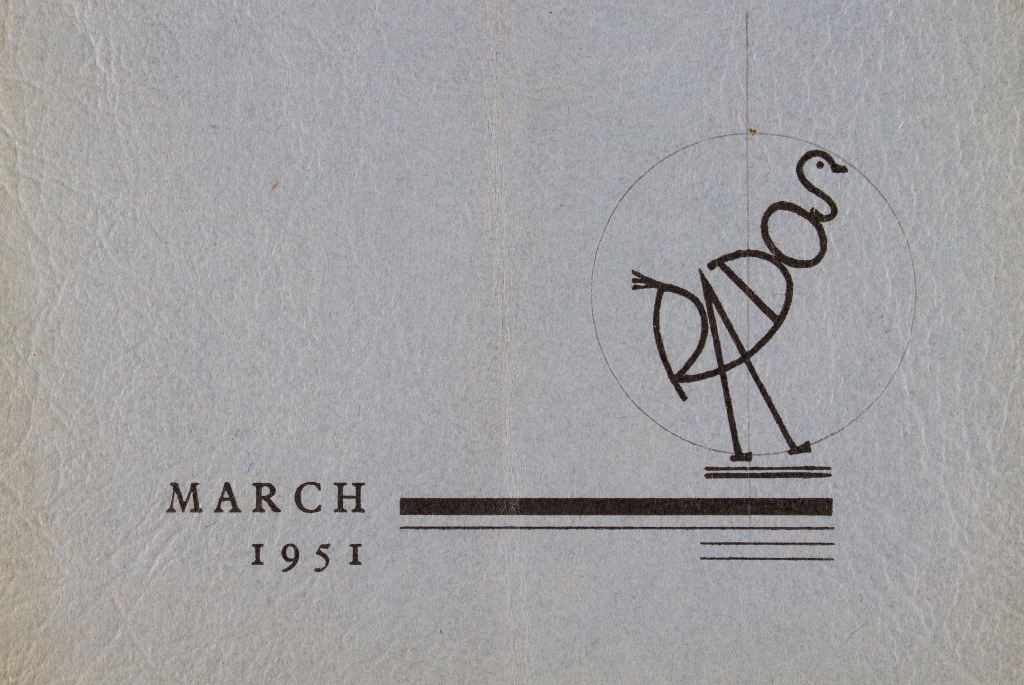
As a longtime member of Greenmount Golf Club, Jim served as Captain in 1966 and was in his second year as President when he passed away in September 1984. His legacy includes a collection of caricatures depicting well-known club members, showcasing not only their character, professions, and interests but also reflecting Jim’s playful sense of humour. These caricatures, once displayed in the clubhouse, were later returned to their subjects or the Hargreaves family upon his death.
Jim Hargreaves left an indelible mark on Ramsbottom, not only through his professional contributions but also through his artistic endeavours, community involvement, and his ability to capture the essence of individuals through his caricatures. His multifaceted legacy is a testament to a life well-lived and deeply connected to the heart of his community.
Caricatures
As mentioned above, Jim’s Greenmount Golf Club legacy included these appealing caricatures of his fellow club members. This charming collection of caricatures appears to capture the essence of each member, immortalising their unique personalities and no doubt creating a sense of camaraderie within the club. Handwritten on the reverse of each picture are the names of the men depicted apart from the one we’ve featured at the bottom. Judging by the streak of lightning behind this figure and the wings on his heels we’d guess he was a whizz on the golf course! His gown might also suggest a career in education. A headmaster perhaps? If anyone could help identify him we’d love to hear from you!

